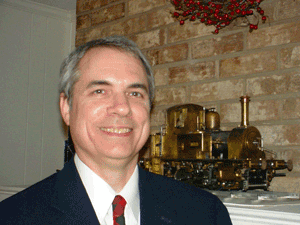General Tools Award 2011 – Richard K. Anderson, Jr.
Richard Anderson has enjoyed a long and distinguished career as a historical architect working primarily in industrial archeology. For more than thirty years Richard has been at the forefront in producing high-quality measured drawings and illustration of industrial processes using innovative handmade and computer-assisted drawing procedures and techniques. Following his receipt of a Bachelor of Arts degree in Architecture in 1973 from Princeton University and a Master of Arts in Architecture from the University of Pennsylvania in 1976, his stellar work in this regard has continued unabated since 1978, when he began his service as Staff Architect for the Historic American Buildings Survey and Historic American Engineering Record of the National Park Service. At HABS/HAER,Richard prepared exemplary measured drawings, site maps, and diagrams of industrial processes, machinery, and structures for some forty different documentation projects. These included bridges, mines, factories, lighthouses, railroad structures and equipment, and eight ships. His 3D drawings of the Rock Handling Process and the Mine Shaft Skips at the Quincy Mine . . . the cutaway and exploded isometric details of ship framing, such as that for the Schooner Thayer . . . and his outstanding leadership of the student effort that produced the one hundred measured drawings of the Boott Cotton Mills in Lowell attest to Richard’s skill and diligence. Through his own drawings, his work supervising student architects, and his efforts to improve HAER’s instruction manuals for recording projects, Richard has had a profound impact on the style, content, and clarity of HAER drawings. His work for HABS/HAER was recognized by a Meritorious Service Award from the U.S. Department of the Interior in 1990.
After leaving HABS/HAER in 1989, Richard established his own consulting practice in cultural resource documentation and continued his focus on the recording of historic sites and structures. In his role as a private consultant, he has completed some seventy documentation projects to HABS/HAER standards. These include fourteen projects involving boats and ships, six structures and facilities owned by NASA, and numerous ironworks, textile mills, steam engines, and historic buildings. He has also restored engineering and architectural drawings and carried out multiple mapping projects.
Among his most important projects was the industrial archeological investigation of the Ford Motor Company Piquette Avenue Plant in Detroit, where the Model T was developed and first produced. Richard thoroughly investigated the location and configuration of the so-called “Experimental Room,” where the Model T was designed and prototyped, along with several other key areas of this important factory, and compiled a comprehensive and profusely illustrated report that included his drawings.
As a consultant, Richard became an early adopter of computer-aided design, or CAD, for use in historic structure documentation. He also developed advanced techniques for using digital photography, historic views, and three-dimensional CAD modeling to enhance both measured drawing documentation and predictive archaeological site planning. These skills led Richard to serve as an instructor at the 2010 SIA photography workshop at the Colorado Springs annual conference.
Richard has also made a major contribution to the field of industrial archeology by writing and editing several editions of Recording Historic Structures and Sites for the Historic American Engineering Record and as the author of the HABS/HAER Guidelines for Recording Historic Ships. The more recent editions of these manuals include guidelines for using the CAD methods for which he played such a pioneering role. These manuals have had, and continue to have, a profound impact on the style, content, and clarity of HAER reports and drawings.
Richard has also given long and devoted service to the Society. In 2011 he completed his fifteen-year tenure as Secretary of the SIA. And in the future, when Richard looks at his General Tools Award trophy, he will be reminded of another of his contributions to the Society: the graphic design of the dedication plaque itself.
For the consistently high quality of his work in the specialized realm of graphic documentation, together with his longtime service both to the field of industrial archeology and to the SIA, Richard K. Anderson, Jr. is a worthy recipient of the General Tools Award.


